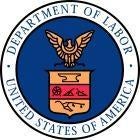Roughly 6,800 U.S. companies have an Employee Stock Ownership Plan, or ESOP, a type of retirement plan in which a company’s workforce owns stock in the company. ESOPs are governed by the Employee Retirement Income Security Act, which was passed 40 years ago.
ESOPs can buy or sell stock – but only at fair market value. Making sure stock is valued correctly is the responsibility of the ESOP’s advisor or valuation expert, but it’s also the responsibility of the company’s owners. And incorrectly valuing stock can be a costly mistake.

Since fiscal year 2010, the department has recovered more than $241 million for ESOP violations, most of which involved improper valuations. Last year fiduciaries had to restore more than $4 million to the Parrot Cellular ESOP, and this June, GreatBanc Trust Co. had to pay $5.25 million to the Sierra Aluminum Co. ESOP. In both cases, the settlements followed investigations finding that those responsible for the ESOP had allowed it to purchase stock above fair market value.
The good news is that these errors are avoidable. In our settlement with GreatBanc, we laid out a set of appraisal guidelines that all employers can follow to ensure they’re making wise and prudent decisions.
ESOP valuation can be complicated. After all, understanding business is one thing, and understanding the stock market is another. Fortunately, there are steps all business owners can take to make sure their ESOPs are buying and selling stocks within the law.
Choose carefully. Make sure your advice comes from a trustworthy source who would not be influenced by conflicts of interest.
Ensure accurate data. To accurately determine a stock’s value, the valuation advisor relies on complete, accurate, up-to-date information. Employers are responsible for getting that information to the advisor.
Check and double-check. When you receive advice, make sure it’s reasonable. Thoroughly read the report and assess it for consistency and accuracy. Check for assumptions about growth projections, financial statements, business risks and other factors that might influence stock value.


 i
i

